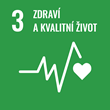
Informace o projektu
Phage infection of bacterial biofilm
(BioPhage)
- Kód projektu
- 101043452
- Období řešení
- 1/2023 - 12/2027
- Investor / Programový rámec / typ projektu
-
Evropská unie
- Horizont Evropa
- Evropská rada pro výzkum (ERC)
- Fakulta / Pracoviště MU
- Středoevropský technologický institut
In 2017, the World Health Organization declared Staphylococcus aureus to be an antibiotic-resistant pathogen for which new therapeutics are urgently needed. Upon infection, S. aureus forms biofilms that can only be treated by the long-term application of a combination of several antibiotics in high doses or the surgical removal of the infected tissues. An alternative approach, phage therapy, has not been approved for clinical use because phage infection is not sufficiently characterized.
We propose to study the dynamics of the propagation of Myoviridae phage phi812 in S. aureus biofilm and molecular details of phi812 replication in a cell. We integrated a microfluidic system into a light-sheet microscope to enable continuous multi-day observation of phage infection of a biofilm. We will determine how sub-populations of metabolically dormant or phage resistant cells in a biofilm provide herd immunity against phi812 infection. Our system enables fixation of segments of biofilm for subsequent correlative imaging by serial block-face scanning electron microscopy to identify interactions of phages with bacterial cells. We will use focused ion beam milling together with cryo-electron microscopy and tomography to determine high-resolution structures of previously uncharacterized phi812 replication and assembly intermediates in S. aureus cells. We will study the function of bacterial membranes and macromolecular complexes in initiation and completion of phage genome delivery, the assembly of phage portal complexes and heads, and the mechanisms of genome packaging and head-tail attachment.
The biological significance of this proposal lies in its focus on the as-of-yet uncharacterized interactions of phages and bacteria in biologically and clinically relevant conditions. Our analyses of phage spread in a biofilm, the herd immunity against phage infection, and phage replication in cells may identify approaches for making phage therapy more effective.
Cíle udržitelného rozvoje
Masarykova univerzita se hlásí k cílům udržitelného rozvoje OSN, jejichž záměrem je do roku 2030 zlepšit podmínky a kvalitu života na naší planetě.
Publikace
Počet publikací: 3
2025
-
Dynamics of bacterial biofilm development imaged using light sheet fluorescence microscopy
BIOCHEMISTRY AND BIOPHYSICS REPORTS, rok: 2025, ročník: 43, vydání: aug, DOI
2024
-
Carpe pili! Hunting strategy, structure, and replication of P. aeruginosa phage JBD30
Rok: 2024, druh: Další prezentace na konferencích
-
Structure and replication of Pseudomonas aeruginosa phage JBD30
EMBO Journal, rok: 2024, ročník: 43, vydání: 19, DOI


